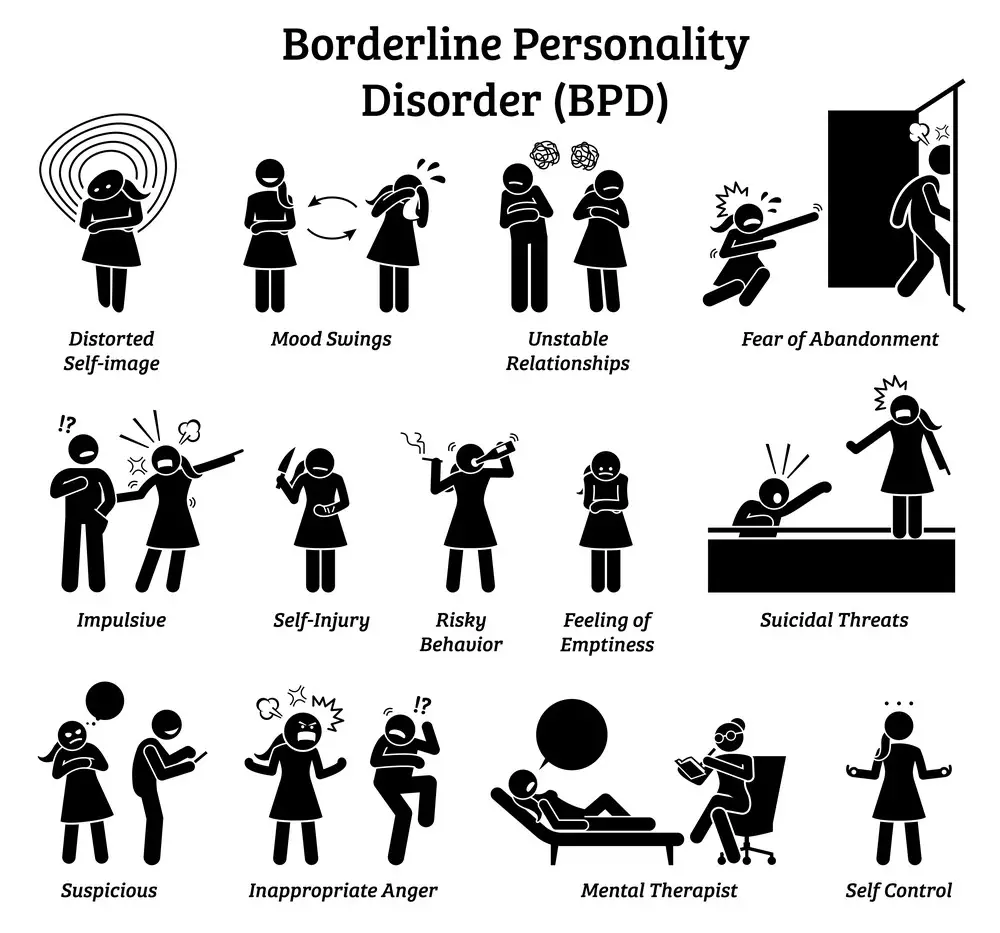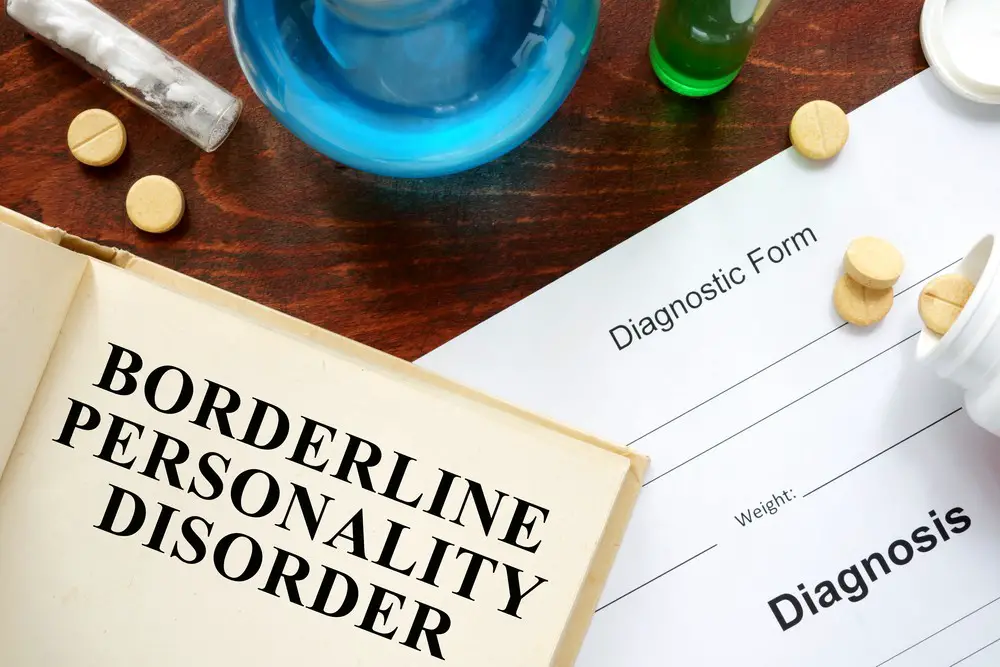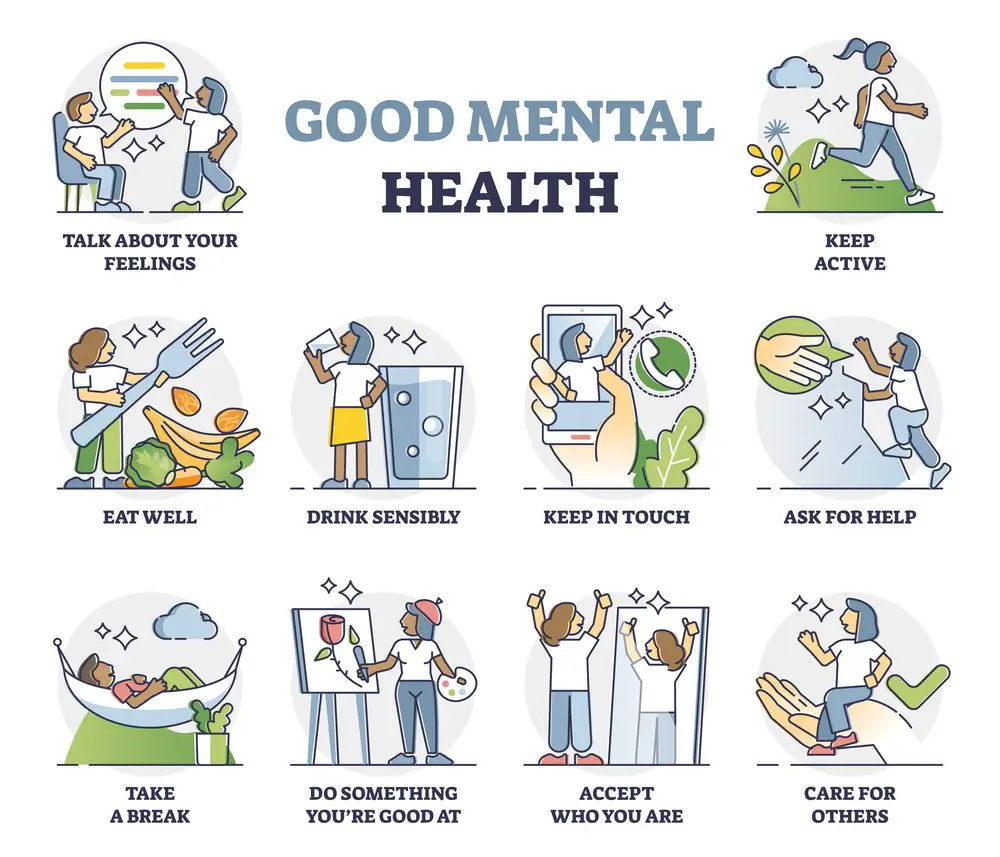As a BetterHelp affiliate, we receive compensation from BetterHelp if you purchase products or services through the links provided
Detaching from someone with borderline personality disorder (BPD) can be a complex and emotional process. Intense emotions, fear of abandonment, unstable relationships, and impulsivity characterize BPD. Maintaining a relationship with someone who struggles with BPD can be challenging. In those cases, it may become necessary for you to detach from the person to protect your well-being emotionally.
Understanding how to detach from someone with BPD requires compassion, patience, and the acceptance that your relationship may change significantly. Learning effective communication strategies and setting healthy boundaries can guide you toward emotional detachment.
Key Takeaways
- Detaching from someone with BPD is an emotional process that requires understanding the disorder and its effects on relationships.
- Implementing effective communication and setting healthy boundaries is essential for healthy detachment.
- Seek support and resources to navigate better the challenges of detaching from a person with BPD.

Understanding Borderline Personality Disorder
Recognizing Symptoms
Borderline Personality Disorder (BPD) is a mental health condition characterized by various symptoms. Some common ones include intense emotions, mood swings, fear of abandonment, and impulsivity. People with BPD may also experience anxiety, suicidal ideation, and feelings of emptiness. Watch for the following behaviors: aggression, reckless driving, binge eating, and self-harm.
Common BPD Behaviors
Those with BPD often exhibit a pattern of unstable interpersonal relationships, marked by fears of abandonment and shifts in affection. Additionally, BPD may cause individuals to engage in impulsive, reckless actions, such as substance abuse, reckless driving, or binge eating. Self-harm and suicidal ideation are also commonly associated with BPD.
Borderline Personality and Other Disorders
BPD can sometimes be confused with other mental health conditions, such as bipolar disorder or depression. However, BPD is specifically categorized as a personality disorder, whereas bipolar disorder and depression are mood disorders. It’s essential to receive a correct diagnosis from a mental health professional for effective treatment.
Diagnosis of BPD
Diagnosing BPD can be challenging. The DSM-5, a classification tool for mental health disorders, outlines specific criteria that must be met for a BPD diagnosis. These criteria include identity disturbance, chronic feelings of emptiness, and difficulty managing emotions. It’s crucial to consult with a mental health professional for an accurate assessment.
BPD and Relationships
BPD can significantly impact a person’s relationships, causing instability and distress. People with BPD may struggle with abandonment fears and have trouble maintaining healthy, long-lasting connections. They can also be prone to sudden emotional outbursts, making relationships challenging for their loved ones.
BPD and Abusive Behavior
In some instances, BPD behavior may be abusive and violent. This can manifest as emotional, verbal, or physical abuse towards partners, friends, or family members. Recognizing and addressing abusive behavior to protect yourself and others is crucial.
BPD and Mood Swings
One of the main characteristics of BPD is unpredictable mood swings. People with BPD can experience intense emotions and dysphoria, often accompanied by rapid shifts in mood. Understanding these mood swings is essential to managing BPD and maintaining healthy relationships.
Key takeaway: BPD is a complex mental health condition with various symptoms and impacts on an individual’s life. Recognizing the signs and seeking professional help is essential for proper diagnosis and treatment.
 Detaching from a Person with BPD
Detaching from a Person with BPD
Establishing Boundaries
Establishing boundaries is crucial when dealing with someone with BPD. Setting clear limits helps you and the person with BPD understand their expectations and responsibilities in the relationship. Be consistent with your boundaries and communicate them. Remember, your safety and well-being are important, so prioritize your needs.
Key takeaway: Set clear limits, be consistent, and communicate your boundaries.
Handling Attention-Seeking Behaviors
People with BPD might show attention-seeking behaviors to test their love or loyalty. It’s important to address these behaviors and reinforce your boundaries calmly. Here are some strategies:
- Acknowledge their feelings, but don’t fuel their behavior
- Offer support and reassurance without giving in to excessive demands
- Encourage healthy communication
Key takeaway: Be patient, provide support, and don’t feed into attention-seeking behavior.
Coping with Emotional Instability
Living with a person with BPD can be emotionally challenging, and it’s essential to prioritize your self-care and well-being. Practice coping strategies, like:
- Engaging in regular exercise
- Practicing meditation or mindfulness
- Building a support network
- Taking time for hobbies and relaxation
Key takeaway: Prioritize self-care, practice coping strategies, and build a support network.
Addressing Reckless Behaviors
Reckless behaviors, such as substance abuse, reckless driving, or overspending, can be common among individuals with BPD. Address these behaviors calmly and firmly, but avoid enabling them. Use clear communication and avoid taking responsibility for their actions.
Key takeaway: Be firm and clear when dealing with reckless behaviors, but don’t enable or take responsibility for their actions.
Recognizing Abusive Behavior
People with BPD might display abusive behaviors, like emotional manipulation or physical violence. Recognize these patterns and take action to protect yourself. Speak out, seek help, and consider ending the relationship if necessary.
Key takeaway: Recognize abusive patterns and prioritize your safety and well-being.
Navigating Feelings of Abandonment
Fear of abandonment can be shared by individuals with BPD, causing them to act out or become overly clingy. To navigate these feelings, remember to:
- Provide reassurance and support without sacrificing your boundaries
- Remain patient and empathetic
- Could you encourage them to seek professional help?
Key takeaway: Offer reassurance and support without crossing boundaries and encourage professional help.
Understanding Self-Destructive Behaviors
Individuals with BPD might engage in self-destructive behaviors, like self-harm or suicidal tendencies. Recognize these behaviors and take them seriously:
- Reach out to a mental health professional
- Encourage the person with BPD to seek help
- Offer support without taking responsibility for their actions
Key takeaway: Understand the severity of self-destructive behaviors, support the individual, and encourage professional help.
 Finding Support and Resources
Finding Support and Resources
Seeking Professional Help
If you’re trying to detach from someone with borderline personality disorder (BPD), one of the first steps is seeking professional help for yourself. Therapists, psychologists, and psychiatrists can help you understand the challenges and set appropriate boundaries in your relationship.
Consider finding a therapist or counselor who specializes in BPD or relationship issues. They can guide you through the process and recommend specific strategies for your situation. Remember, taking care of your mental health is essential during this time.
Self-Education about BPD
Educating yourself about BPD is crucial to understanding this disorder’s intricacies better. Knowledge is power, and by arming yourself with information, you’ll be better equipped to navigate the complexities of detaching from someone with BPD.
Start by:
- Reading books, articles, and research studies about BPD
- Watching documentaries or listening to podcasts
- Attending workshops and seminars on the topic
By becoming more informed, you’ll be able to empathize with the person in question while also prioritizing your well-being.
Leveraging Support Groups
Support groups can be a lifeline during challenging times. Connecting with others who have experience dealing with a loved one with BPD can offer you:
- Emotional support and understanding
- Practical tips and advice
- A safe space to share your feelings and experiences
To find a support group, search online or ask your therapist or mental health professional for recommendations. Don’t hesitate to attend a variety of support groups until you find the one that best suits you.
Key takeaway: support groups provide valuable connections and a sense of community.
 Taking Care of Your Mental Health
Taking Care of Your Mental Health
While detaching from someone with BPD, your mental health is a top priority. Practicing self-care during this time is essential in ensuring that your emotional and psychological well-being remains intact. Here are some tips:
- Prioritize your physical health (exercise, eat well, get enough sleep)
- Engage in hobbies and activities you enjoy
- Lean on your support network of family and friends
- Meditate, practice mindfulness, or consider relaxation techniques
Remember, establishing and maintaining boundaries is crucial for self-preservation in the relationship, and prioritizing your mental health is vital.
 Navigating the Emotional Maze: When Detaching from Someone with BPD
Navigating the Emotional Maze: When Detaching from Someone with BPD
Detaching someone with Borderline Personality Disorder (BPD) is undoubtedly an emotional rollercoaster. While it’s essential to approach the situation with empathy and understanding, protecting your emotional well-being is equally important.
Signs You Might Need Professional Therapy
Navigating a relationship with someone who has BPD can be emotionally taxing and might indicate a need for therapeutic intervention for yourself. Here are some signs:
- Exhaustion: If you’re feeling emotionally drained and unable to cope, this is a key indicator you might need professional help.
- Loss of Self: If your identity and self-worth are becoming too intertwined with the person with BPD, therapy can help you rediscover yourself.
- Chronic Stress: Constant tension and worry about the relationship signal that you might need more structured emotional support.
- Resentment or Anger: When negative feelings accumulate and impact your mood or behavior, it’s time to consult a mental health professional.
Setting Goals for Detaching from a Person with BPD
- Educate Yourself: Understand BPD, its symptoms, and how it impacts relationships. Your therapeutic goals should involve increasing this awareness.
- Identify Triggers: Learn what specific behaviors or situations in your relationship cause emotional turmoil. Your goals should include strategies for managing these triggers.
- Emotional Resilience: Build up emotional fortitude to withstand the ups and downs. Small steps toward emotional independence can be significant milestones.
- Communication and Boundaries: Aim to communicate clearly and assertively, setting boundaries that protect your emotional well-being.
Recognizing Progress in Detaching from Someone with BPD
- Clarity of Thought: If you start finding it easier to make decisions without excessive emotional turmoil, you’re making progress.
- Reduced Anxiety: A decrease in constant worry or anxiety about the relationship is a good sign.
- Empowered Communication: You’re on the right track when you can assert your needs and boundaries without excessive guilt or fear.
- Increased Emotional Stability: If you find that you’re less affected by the emotional highs and lows of the relationship, it’s a sign of successful detachment.
Key Takeaways
- Detaching from someone with BPD requires an in-depth understanding of the disorder and focusing on your emotional well-being.
- Effective communication and boundary-setting are crucial for a healthy detachment process.
- Professional therapy offers structured emotional support and coping mechanisms.
- Recognize your progress and adapt your strategies as you move toward detachment. It’s okay to seek additional help and resources.
In summary, detaching from someone with BPD is not a straightforward process. It’s emotionally challenging and requires careful planning, goal-setting, and, potentially, professional help. Keep tabs on your emotional state, and don’t hesitate to seek additional support. Your emotional health should always be a priority.
Frequently Asked Questions

How to set boundaries with a BPD friend?
Setting healthy boundaries with a friend with borderline personality disorder (BPD) is crucial. To do this, communicate openly about your needs and limits. Be consistent and firm in your approach, avoiding overly emotional responses to their actions. Remember that saying “no” to their demands or requests is okay. You can also:
- Share your feelings and concerns openly with them.
- Seek mutual understanding and respect.
- Prioritize your self-care and focus on your mental well-being.
Key takeaway: Healthy boundaries are necessary to maintain a balanced and supportive relationship with BPD friends.
What can I do to protect myself from a BPD individual?
To protect yourself from the emotional impact of a BPD individual, you should:
- Maintain strong personal boundaries.
- Take time for self-care to nurture yourself emotionally.
- Learn about BPD to understand their behaviors and emotions.
- Avoid taking their behaviors personally.
- Seek professional help or support groups if needed.
Key takeaway: Protecting yourself is essential when interacting with someone with BPD; prioritize your well-being, set boundaries, and seek support as necessary.
Why is leaving a BPD relationship difficult?
Leaving a BPD relationship can be difficult due to the intense emotional bond that often develops between partners. BPD’s unpredictable and volatile nature can make it challenging to separate yourself from the relationship. Additionally, guilt, fear, or insecurities about one’s self-worth may contribute to the difficulty in ending the relationship.
Key takeaway: Leaving a BPD relationship is challenging due to strong emotional attachments and the complex nature of the disorder.
What are effective communication strategies with someone with BPD?
When communicating with someone who has BPD:
- Practice active listening to understand their perspective.
- Maintain a calm, non-confrontational tone.
- Use “I” statements to express your feelings and needs.
- Validate their emotions by acknowledging their feelings.
- Set clear boundaries and expectations.
Key takeaway: Effective communication strategies can help establish a healthier and more balanced relationship with a person with BPD.
How can I manage living with a person with BPD?
Managing life with a BPD person can be challenging, but the following tips will help:
- Stay informed about BPD to recognize its symptoms.
- Set healthy boundaries for your personal space and time.
- Encourage your loved one to seek professional help.
- Foster good communication and mutual understanding.
- Reach out to support groups or therapists for guidance.
Key takeaway: Managing a life with someone who has BPD requires understanding, communication, and support.
How to cope with having a favorite person when you have BPD?
If you have BPD and have identified a favorite person, consider the following strategies to maintain balance in your relationship:
- Practice self-awareness to recognize your emotional shifts and triggers.
- Seek professional help to develop coping mechanisms.
- Communicate openly with your favorite person about your feelings and needs.
- Learn to manage the fear of abandonment or rejection.
- Focus on building a support network to avoid over-reliance on one individual.
Key takeaway: Coping with having a favorite person when you have BPD involves self-awareness, communication, and a balanced support network.
Jacob Maslow
After surviving the traumatizing events of 9/11, I took it upon myself to heal through helping others. I’m the primary caregiver of my children and understand from first-hand experience the lonely paths you have to walk as a partner and parent when leaving an unhealthy relationship.
We’re all echoing in a dark space that doesn’t have to be this empty, and that’s been my mission since finding solace and recovery in therapy: To help comfort others who are still in shock and at the prime of their struggle.
I came across BetterHelp after searching for this type of community. I wanted to belong to a body of proactive therapists and supportive therapy veterans that allowed me to see other sides of the story.
It was unconventional, and that’s what attracted me most. During my most challenging times, when my ex-wife completely cut me off from my children, I found comfort and clarity through BetterHelp.
Instead of being chained to a strict therapist recommendation, I was in charge of who I felt understood my struggle most. That allowed me to find my true peace, as I was reunited with those who read behind my words and had first-hand experience with my trauma.
Recovery is a choice; with BetterHelp, that choice will be a few clicks away. You can join their couples-oriented platform, Regain.us, for those stuck with family estrangement and toxic relationship patterns.
- 3 Ways Wearing a Hat Can Help Lower Your Stress Levels - April 19, 2025
- Breaking the Silence: Why Men’s Mental Health Matters More Than Ever - April 15, 2025
- How to Transform a Home’s Patio Space into a Relaxing Space - March 23, 2025
This site contains affiliate links to products. We will receive a commission for purchases made through these links.


 Detaching from a Person with BPD
Detaching from a Person with BPD Finding Support and Resources
Finding Support and Resources Taking Care of Your Mental Health
Taking Care of Your Mental Health Navigating the Emotional Maze: When Detaching from Someone with BPD
Navigating the Emotional Maze: When Detaching from Someone with BPD
